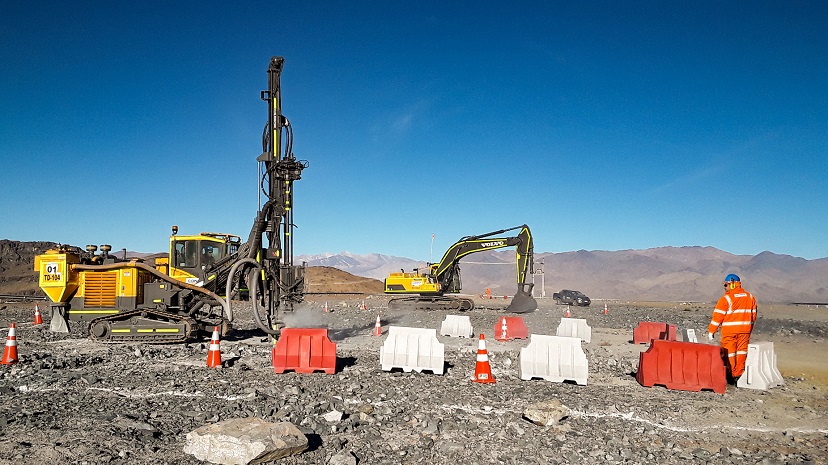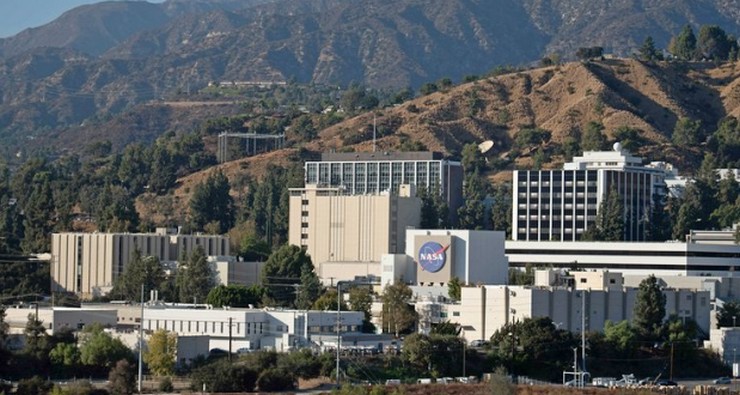
The Pasadena-based Giant Magellan Telescope Organization (GMTO) announced engineers have this week begun excavation at the telescope’s site at the Las Campanas Observatory in Chile, where the Giant Magellan Telescope will be mounted.
In the not too distant future – before 2025 to be more specific – scientists should be able to look further back in time and closer to the origins of the universe, with the giant telescope that they’re starting to build this week in Chile.
The telescope, called the Giant Magellan Telescope, will also allow them to look closer into recently discovered Earth-like planets as they strive to find answers to the question, “Are we alone?”
“What we’re celebrating now is we’re actually starting to lay the foundation by doing hard rock excavation,” Robert Shelton, President of the GMTO Corporation, said. “This is a massive project. The telescope mount itself weighs 1,400 tons and so we’re starting to drill the excavation so we can pour concrete and rebar and build that foundation. The enclosure that goes around the telescope mount is the equivalent of a 22-story building and it’s a diameter of about 56 meters. So we’re going to be laying the work for the foundation there and then some of the support buildings as well.”
Major site preparation began in March 2012 with the first blast to level the mountain peak. In November 2015, construction started with a ground-breaking ceremony.
Shelton said the start of excavation work on the site tells astronomers around the world that the GMT project is now moving from the ground up.
“You know, people like to see physical things going on,” Shelton continues. “You can think about how you make a mirror, you can think about how you’re going to build an instrument, but when they see the construction going on, that is a big step.”
Work on the site will be performed by Minería y Montajes Conpax (known as Conpax), an engineering services company that has previously performed site work for other observatories in Chile. Using a combination of hydraulic drilling and hammering, the excavation work is expected to take about five months to complete. The GMT is expected to see first light as early as 2024.
When the giant telescope starts operating, Shelton said scientists would first of all be able see things they may not have anticipated nor imagined. As the telescope would be able to collect more light, the scientists would be able to look at objects that are more distant objects, he said.
“And when you’re looking at objects that are more distant, you’re looking farther back in time, because you’re seeing the light that came from those objects long ago,” Shelton said. “Light doesn’t travel instantaneously. It only travels at the speed of light. So this will allow us to look further back in time than any other telescope, closer to the big bang within hundreds of millions of years instead of billions of years. And that will help us answer a lot of questions that astronomers and cosmologists want to know about the origins of galaxies, and star formation.”
With currently existing telescopes, astronomers have been able to discover planets outside of the Solar System – exoplanets – that are similar to Earth, leading to speculation that some of these may also have the same elements as Earth to support life. With the GMT, they would now be able to look closer at those planets, instead of simply identifying them.
“We can only say there’s a planet. We can’t characterize its atmosphere. Maybe we can’t do that because we don’t have enough light-collecting power and we can say it’s there, but we can’t break that – the spectrum of the light – up into enough signal-to-noise to tell us what molecules are there,” Shelton explained. “Each molecule has a certain signature, and if you can collect enough light and you can break that light across the spectrum, get enough signal-to-noise, then you can say, ‘well, look, here’s the signature of water vapor, here’s a signature of diatomic oxygen, here’s a signature of methane, here’s a signature of ozone,’ all of those molecules that we associate with light. And that’s what this telescope will do. It will collect enough light on enough exoplanets to start telling us what the atmospheres of those planets are like. That gets people excited.”
The 25-meter diameter GMT, expected to have a final weight of about 1,600 metric tons, will comprise seven 8.4-meter mirrors supported by a steel telescope structure that will be seated on the concrete pier on the Las Campanas site. It will be housed inside a rotating enclosure that will measure 65 meters tall and 56 meters wide.
As well as working on the enclosure and telescope pier foundations, Conpax will excavate a recess in the summit rock for the lower portion of the mirror coating chamber, and foundations for a utility building and tunnel on the summit.
The GMT site in Chile is owned by the Carnegie Institution for Science, which also operates the Carnegie Observatories in Pasadena. The location offers a key advantage in terms of seeing through the atmosphere. Located in the Atacama Desert, one of the highest and driest locations on earth, the GMT will have spectacular conditions for more than 300 nights a year. Las Campanas Peak has an altitude of over 2,550 meters, or about 8,500 feet, and almost completely barren of vegetation due to lack of rainfall. The combination of seeing, number of clear nights, altitude, weather and vegetation make Las Campanas Peak an ideal location for the giant telescope.
On the mountain next to Las Campanas, construction is also underway for the Large Synoptic Survey Telescope (LSST), a wide-field survey reflecting telescope with an 8.4-meter primary mirror that will photograph the entire available sky every few nights.
“It’s going to take a movie of the sky every night and then from night to night, you can look and see what’s changed,” Shelton said. “I think it was kind of like the way the shepherds used to look up in the sky and say, ‘wait a minute, that piece of light has moved,’ and they were called planets. This is more refined than that. We’re positioned to actually look at those changes. So if there is a change to an asteroid or something else of interest, we could look at it.”
Asked who would be able to use the GMT when it’s up and running, Shelton said that’s where membership in the GMTO comes into play.
“To get time on the telescope, you would have to be affiliated with one of the partners,” he said. “They’re the ones that are building it and they’re the ones who will operate it. Sort of like the Keck telescopes in Hawaii when they started, you had to be on the faculty or a collaborator with somebody at Caltech or the University of California.”
Data collected from the GMT would definitely be shared, Shelton said, although he theorized there may be some short proprietary period, where the persons that collected the data would have exclusive access.
“And then after that, it would go into a data archive that would be made available to the community,” Shelton said. “Now that also is a question because when you put the data into the archive, what form is it in? Is it in a bunch of ones and zeros? And so nobody really could use it. Well, no, that’s not helpful. So you have to then make sure the data are analyzed in a way so they’re useful to people when you put them into the archive.”
The Giant Magellan Telescope will use seven of the world’s largest mirrors as primary mirror segments, each 8.417 meters in diameter. These segments will then be arranged with one mirror in the center and the other six arranged symmetrically around it.
The mirrors are being constructed by the Richard F. Caris Mirror Laboratory at the University of Arizona’s Steward Observatory. Casting of the first mirror was completed on November 3, 2005, but polishing was completed in November 2012, meaning an average of six and a half years later for each mirror. The second mirror was cast in January 2012, a third segment was cast in August 2013, and the fourth in September 2015.
This past year, project engineers have cast the fifth primary mirror segment at the Caris Lab.
With seven identical off-axis mirrors, a spare will be available to substitute for a segment being recoated every one to two years. While the complete telescope will use seven mirrors, the GMTO plans to begin operation in 2024 with four mirrors.
Building the enclosure for the GMT would probably take up to the middle of 2021, Shelton said.
“Here’s the thing to keep in mind: there’s sort of three major components that all have to be coordinated,” he explained. “Number 1 is the enclosure. That’s the huge building that houses everything. Number 2 is the telescope mount. That’s what holds the mirrors and eventually all the instruments and detectors. Then of course, third, the mirrors – and you don’t want to ship the mirrors up there until you have the mount to put them in. You don’t want to put the mount on the summit until you have the enclosure, so everything is protected. Our goal is to have the enclosure telescope mount and the first four of the seven mirrors all up and operational in 2024.”
To learn more about the GMT project and its partners and stakeholders, visit www.gmto.org.

















